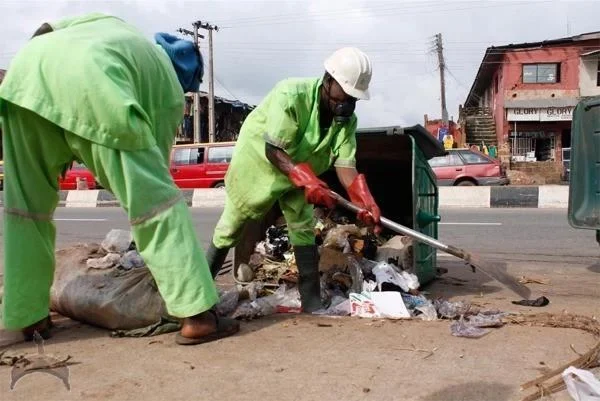Copyright brecorder

Despite a growing web of institutions, Pakistan’s foreign investment framework remains a case study in governance without outcomes. Pakistan’s investment story is a paradox - an expanding web of institutions, but shrinking results. Foreign direct investment (FDI) in Pakistan has never lacked attention - only results. Each decade begins with new promises of reform, new councils, and new slogans about investor facilitation. Yet the data tells a blunt story: after two full cycles of rise and decline, Pakistan’s net FDI inflows fell to a two-decade low, with fresh inflows in FY2022-23 barely crossing USD 340 million, according to data from the State Bank of Pakistan. The departure of major global corporations - Shell, Telenor, Uber, Procter & Gamble, Bayer, and Pfizer - is not coincidence. It reflects a deeper crisis: Pakistan’s governance failure in managing its investment regime. The institutions created to attract investors have multiplied in form, but not in function. Institutional expansion without performance The Board of Investment (BOI), under the Prime Minister’s Office, is designed to be the country’s flagship investment facilitation agency. Over time, it has become increasingly top-heavy, with four regional offices and donor-funded reform cells but with diminishing results. Despite its expansion, and with one of the most liberal investment policies in the region, Pakistan’s FDI inflows have fallen dramatically. The BOI has drifted from a facilitator and enabler into an administrative symbol of inefficiency - unable to defend, promote, retain or protect the very investments, it was mandated to secure. Duplication and disarray Pakistan’s FDI architecture today is a maze: the BOI at the centre, provincial investment promotion agencies (IPAs) in each province, and now the Special Investment Facilitation Council (SIFC). In theory, this institutional layering should create synergy and shared purpose. In reality, it has produced duplication, turf competition, and bureaucratic confusion. Investors encounter multiple entry points but no single door. The result is paralysis masked as facilitation. What Pakistan calls a “one-window” operation has become a corridor of overlapping windows. Governance, not policy, is the problem Pakistan does not suffer from a shortage of policy; it suffers from a shortage of governance and implementation. Every few years, a new investment framework is launched with fanfare - yet none survives beyond the tenure of their initiators. Institutional memory is wiped clean with every government change. Donor-funded reform projects are announced and abandoned once funding ends. Reform units vanish before impact assessments are even conducted. Governance failure is structural, not circumstantial: a system incapable of sustaining reform, enforcing accountability, or coordinating across its own agencies. High costs, low competitiveness — symptoms of systemic failure High electricity tariffs, volatile taxation, currency devaluation, low GDP growth, and profit repatriation restrictions are often cited as key deterrents. These are not the causes of FDI decline - they are the symptoms. The disease is institutional incoherence: poor energy governance that drives up power costs; fiscal policy that punishes the documented sector; and a regulatory culture that prioritizes discretion over predictability. When institutions cannot coordinate, implement, or learn; competitiveness collapses - and with it, jobs, output, and growth. Accountability without performance Despite its scale and resources, the BOI - and the provincial IPAs - have never undergone a value-for-money audit. There is no public record linking taxpayer spending to measurable outcomes such as investor retention, project completion, or reinvestment rates. Reform has been reduced to activity without impact - MoUs instead of milestones, expos instead of exports. Donor-driven projects have produced consultants and studies, not capacity. Without accountability, expansion is meaningless. Pakistan has built institutions but not institutional responsibility. Peer economies: the governance gap Pakistan’s stagnation contrasts sharply with the performance of regional peers. Vietnam, Bangladesh, and Malaysia have demonstrated that strong governance and institutional discipline are the foundation of sustained FDI. Vietnam’s Ministry of Planning and Investment (MPI) aligns every foreign project with national industrial and export strategies. Malaysia’s MIDA tracks investment pipelines through data-backed dashboards and strict performance metrics. Bangladesh’s BEZA has built investor confidence by delivering policy stability and infrastructure reliability. Their success is not built on tax incentives alone - but on credibility, coordination, and accountability. Governance, not generosity, attracts capital. Their success is not built on tax incentives alone - but on credibility, coordination, and accountability. Governance, not generosity, attracts capital. Domestic weakness and the absorptive gap Pakistan’s domestic industrial base remains too shallow to absorb and sustain foreign investment. Without linking FDI to local suppliers and SMEs, foreign projects rarely generate employment or technology transfer. New company registrations under the SECP (Securities and Exchange Commission of Pakistan) are often liaison or trading offices - a sign of commercial presence, not productive investment. Domestic enterprise remains marginalized from value chains, leaving FDI isolated from the real economy. A country that cannot build its own competitiveness cannot anchor external capital. Fragmented policy, fractured outcomes Yet Pakistan’s governance crisis extends beyond investment institutions - it permeates policymaking itself. Investment, trade, industry, and social sector policies in Pakistan operate in silos. The Commerce Ministry focuses on exports but ignores industrial input costs. The Board of Investment markets the country abroad without linking to domestic value chains. The FBR (Federal Board of Revenue) pursues its own revenue targets, detached from growth considerations. Meanwhile, social sector development - including health and education - remains disconnected from the country’s economic and productivity goals. Environmental protection and industrial sustainability are treated as separate agendas rather than integral to economic policy. This disconnect leaves Pakistan lagging behind peers who align industrial growth with green transition and sustainable investment frameworks. The result is a weak human capital base - an unhealthy, unskilled workforce incapable of bearing the burden of national productivity and economic transformation. This fragmentation ensures that trade does not complement FDI, FDI does not strengthen industry, and human and environmental development does not translate into competitiveness. The very policies meant to reinforce each other instead collide in bureaucratic isolation. Reform fatigue and the culture of announcement Pakistan’s investment story is one of repetition, not reform. New institutions are announced with every crisis; none are sustained. Each policy cycle begins with high rhetoric and ends in quiet irrelevance. This culture of announcement without delivery has eroded investor trust. Foreign investors no longer expect continuity - only constant reinvention. Reform fatigue has replaced institutional credibility. The way forward: governance before incentives Pakistan’s path to recovery lies not in creating new councils or committees but in rebuilding governance foundations. • Clarify mandates: Clearly define the roles and responsibilities within Pakistan’s investment architecture to eliminate duplication - ensuring all institutions coordinate under a unified national investment framework. • Professionalise capacity: Build analytical and performance-driven capability through merit-based contracts, replacing ceremonial or ad hoc appointments. • Integrate policy: Align FDI with industrial, trade, and social sector policies to maximize local value addition and inclusive growth. • Ensure accountability: Introduce annual public audits that link institutional budgets to measurable investment outcomes. • Guarantee continuity: Legally protect investment frameworks from political reversals, administrative convenience, or bureaucratic reshuffles. •Enable private sector development: Foster an agile, responsible, and socially responsive private sector as a key partner in sustainable investment growth. Conclusion: FDI mirrors governance The decline of FDI is not the cause of Pakistan’s economic malaise - it is its mirror. High electricity tariffs, low GDP growth, unemployment, and weak competitiveness are all symptoms of a system where governance fails, institutions overlap, and accountability disappears. New investment is not coming, and existing investors are leaving - not for lack of potential, but because governance remains unpredictable and implementation unreliable. Peer economies have shown that when governance stabilizes, investment follows. Until Pakistan fixes its governance - aligning institutions, enforcing accountability, and sustaining policy - no facilitation council or incentive package will reverse the trend. In the end, investors do not follow promises. They follow predictability - and systems that work. Copyright Business Recorder, 2025



